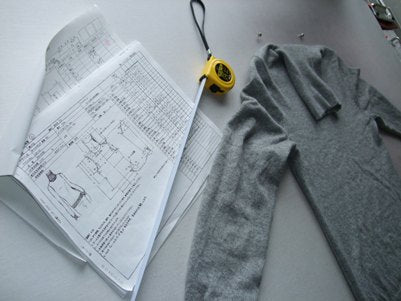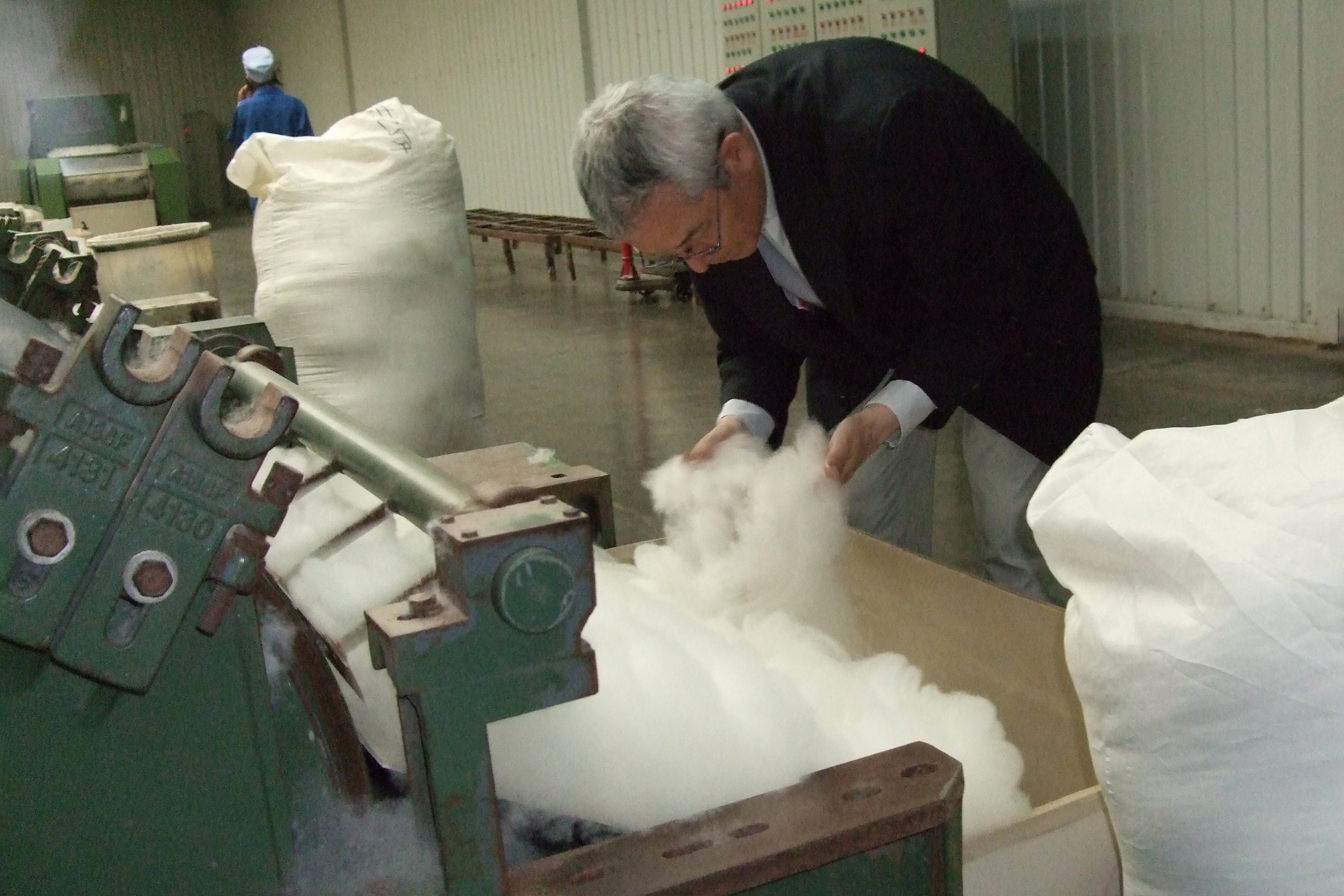Visiting the Home of Cashmere Are humans abusing cashmere? I want to find out.

Visiting the Home of Cashmere
Are humans abusing cashmere? I want to find out.
In search of the world's finest cashmere, go to Alashan, the unexplored region of China
Cashmere is produced from the downy hair of cashmere goats that inhabit the harsh climates of the highlands of Inner Mongolia and the Republic of Mongolia in China, the Gobi Desert in Central Asia, Kyrgyzstan around the Taklamakan Desert, India, and Afghanistan. The highest grade of raw wool is produced in Inner Mongolia, China.
I had one secret purpose for visiting the area. I had one secret purpose for my visit to Inner Mongolia: "Is there any abuse of cashmere in the process of raising and harvesting cashmere goats? It was to see if there was any abuse of cashmere in the cashmere breeding and harvesting process.
This is because I thought that in order to become the world's number one cashmere manufacturer with cashmere as its main business, "cashmere and people must have a win-win relationship. Although I thought it was impossible, I was prepared to give up the cashmere business if by any chance humans were abusing cashmere to obtain cashmere downy hair, which would be a real shame.
This was due to the sad history I learned about the Tibetan chiru, an animal that lives in Tibet, and humans. It was Mr. Kimura of Keken (Keken Certification Center) who told me about it.
*Keken was originally called the Hair Inspection Association, a former affiliate of the Ministry of International Trade and Industry, a company that judges cashmere and other products.
Chiru is an animal of the bovine family that lives in the highlands of Tibet and other parts of Asia, and has finer hair than cashmere. It cannot be domesticated and lives in its natural habitat at high altitudes of over 3,000 meters above sea level in Tibet. The scarves made from its hair are considered the best wool in the world, but in order to obtain the wool, the chiru must be killed and its hair harvested. The chiru is an endangered species, and its harvesting is banned by the Washington Convention.
I left for the trip with the expectation of seeing real cashmere for the first time and the slightest fear that I might encounter a situation where cashmere is abused.

Discovering the Good Relationship between Cashmere and Human Beings
It was the end of May in Alasen, Inner Mongolia, China, and spring was in full swing.
To get to Alasen, fly from Japan to Beijing, change to a domestic flight, and fly further west inland for about two hours. Yinchuan is the nearest city.
Yinchuan is the capital of the Ningxia Hui Autonomous Region. At the time of Genghis Khan, there was the Kingdom of Xixia. It is close to the Loess Plateau, which is the source of the yellow sand that flies to Japan, but it is a city rich in water and agricultural products in the middle reaches of the Yellow River.
The morning of departure from Yinchuan. The yellow sand, which had been so severe until yesterday that we could not even see the buildings across the street, had stopped, and the weather was clear. We loaded the car with a considerable amount of plastic bottles of water as a precaution and set off!
Outside the city of Yinchuan is a desolate semi-desert, and we drove along a single paved road running unreliably through the desert toward the Khoran Mountains on the border with Inner Mongolia.
The mountains are a semi-desert with no trees at all and only a few grasses and shrubs, and on either side is a vast expanse of land with mountains stretching far beyond the horizon.
When we reached the halfway point of the Galan Mountains, which separate the Ningxia Hui Autonomous Region and Inner Mongolia Autonomous Region, the crumbling Great Wall of China came into view, and we realized how far we had come.
After crossing a 1600-meter mountain pass and entering Inner Mongolia, we came to the left flag of Alashan. I was deeply moved to realize that we had finally reached Alashan.
Here we met up with Mr. Liu, a cashmere collector, who led us to the home and grazing land of Ms. Du, a pastoralist.
After driving for a while, Mr. Liu's car suddenly left the paved road and drove into the semi-desert. When the car enters the sand, where the ruts from the car are still faintly visible, it shakes so violently that its head touches the ceiling of the car.
It would have been impossible to find a herder's house in the vast desert without Mr. Liu's guidance.
Mr. Du and his wife, who welcomed us, have been cashmere herders since their father's generation. The house is a single house in the middle of a large semi-desert. The exterior of the house is simple brickwork, but the inside is brighter than I expected.
Mr. Du's family consists of four members. Two girls in elementary and junior high school cannot go to school from here, so they live in a boarding house and look forward to coming home on weekends. We were greeted with tea containing goat's milk and "karintou" (fried in sheep's oil). It is quite delicious.
Cashmere is harvested only once a year. Since this is the busiest time of the year for Mr. and Mrs. Du, we give them our souvenirs from Japan and ask them to show us how they harvest the cashmere.
Mr. Du said, "Well," as he grabbed the legs of the fluffy cashmere and tied the front legs on both sides and the back legs on both sides in no time at all. Kashmiya was so surprised that she flapped her legs. I was also surprised and wondered why he tied her up. But it soon became quiet.
Unlike shearing sheep with clippers, cashmere shearing is done with a tool like a rake to comb out the downy hairs inside the long bristles. I understood that it was not the worst thing to kill the cashmere like Chiru, but now I was worried that the cashmere might be hurt by the combing. But against my will, the cashmere is very docile.

I was relieved and impressed by the good relationship between cashmere and humans that I saw with my own eyes.
Unlike shearing sheep with clippers, cashmere shearing is done by combing out the downy hairs inside the long bristles with a tool like a rake.
Each combing yields a considerable amount of downy hair. The hairs are long, fine, and soft, and even I can tell that they are magnificent downy hairs.
I honestly asked Mr. Du about my questions and concerns.
Mr. Du answered my rude questions with a smile on his face.
He asked me with a smile, "Can cashmere really be mistreated for the rest of its life?
'Kashmiya is our precious family member and property who has been living with us all her life. She is our daughters' best playmate when they come home from boarding school on the weekends, so there is no way she could be abused.'
'It is quite painful for a human being to have their hair pulled out, but not for a cashmere whose downy hair is taken out?
"Cashmere's downy hair is winter hair, which naturally grows back in summer, and we get it.
'It doesn't hurt when combed because it is so naturally shedding, and if humans don't comb it, it will either fall out naturally or rub itself against rocks and other objects to try to remove the hairs. Such hairs can get sand in them and damage them, so it is good for the cashmere to have them combed this time of year.
Sheep are not tied up when they are sheared, so why tie up the legs of the cashmere?
Sheep are not docile like sheep, so we tie them lightly so that they don't get out of control and injure people. So they will soon become docile.'
He told me with a look that made me wonder why he was asking me such a question.
They are actually docile when they are being combed, and it looks pleasant to see their tawny eyes.
I knew from my time in Japan that I would never abuse them, but I did not know that they were winter hairs that naturally fall out, so I was truly relieved when my doubts about whether the cashmere being combed would not be painful were put to ice, and I felt supremely happy that I could now continue working with cashmere.
The combed cashmere felt refreshed and like a trip to the barber. Near noon, the outdoor temperature is over 30 degrees Celsius even in May. The air is dry, so I don't sweat, but the sunlight is very bright. The days will continue to get over 40 degrees Celsius, and it would be a pity if she had to wear her winter coat.
After five minutes of carding, my arms felt tired and I soon gave up. Mr. and Mrs. Du's hand combed the wool quickly and rhythmically, and it took about an hour to finish. Shearing sheep on TV takes about five minutes, but harvesting the downy hair of cashmere is very hard work compared to that of sheep.
Until I came here, I had a fear in the corner of my mind that the cashmere might be forcibly sheared for the sake of human beings. I was truly happy to know that it was a good thing. Knowing this was the best part of the trip.
On the way back from Mr. Du's house, as we drove through the vast semi-desert of Inner Mongolia that seemed to stretch to the horizon, herds of white cashmere goats grazing in the fields dotted the road. It was a very happy visit to the home of cashmere.







